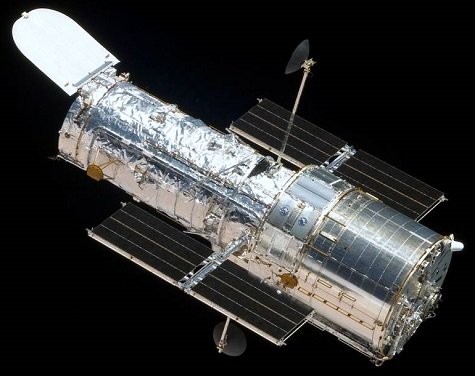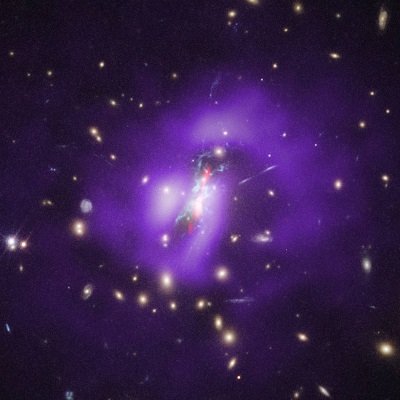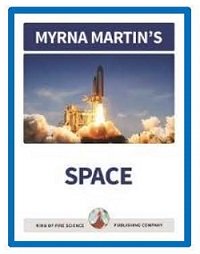Fascinating hubble telescope facts
Hubble in orbit for 30 years
Galileo revolutionized our understanding of space
Four hundred years ago Galileo built his telescope and
discovered that the planets revolved around the Sun and not the Earth. His
studies revolutionized our understanding of space.
Space shuttle Discovery transported HST into space
The Hubble Space Telescope (Hubble or HST) has been in orbit
for over 30 years. The telescope was carried into space by the space shuttle
Discovery on April 24, 1990. The next day Hubble was released into orbit. The
telescope has taken over a million images about our Solar System and deep
space.
Hubble Space Telescope

Many contributions of Hubble
The Hubble telescope has increased our understanding of the birth of stars, the presence of blackholes in galaxies, and the different types of galaxies in the Universe. It has also sent back stunning pictures of the Solar System Photo by NASA
Our Search for knowledge about space
Early astronomers’ discoveries
Observations by Copernicus, Galileo and Kepler changed our
belief that the Earth was the center of the Universe. Their studies revealed
that the Earth and other objects in the Solar System rotated around the Sun.
Today this concept is known as the Heliocentric Theory.
From the dawn of time people have had to depend on their eyes to view the heavens. Galileo ushered in a whole new understanding of the Universe when he built his telescope in 1610. Galileo studied and observed five planets and the Moon with his telescope. The planets he could observe were Mercury, Mars, Venus, Jupiter and Saturn.
People continued to want to study the heavens, so they built newer telescopes that were larger and more complex. They placed large telescopes in observatories on mountain tops where it was easier to see stars and other objects in space.
More than one galaxy in the Universe
The Milky Way is our home galaxy. At the start of the 20th
century people believed that all the stars in the sky were part of the Milky
Way Galaxy. They also believed that it was the only galaxy in the Universe. We now know there are billions of galaxies in outer space.
Edwin Hubble's discoveries
100-inch Hooker Telescope
Edwin Hubble, an American astronomer, began studying the Universe
in the 1920s at the Mount Wilson Observatory near Los Angeles, California. He
studied the skies using a 100-inch Hooker Telescope that was the most powerful
telescope in the world at this time.
Finding millions of galaxies
Hubble studied a Cepheid variable star to determine its
distance from Earth. His studies led him to discover the star was so far away
it could not be part of the Milky Way Galaxy. He proved that there were
millions of galaxies in the Universe.
Edwin Hubble invented a galaxy classification system known as the Hubble Sequence in 1926. His classification grouped galaxies into three main classes: spirals, ellipticals and irregulars. Today a fourth category, barred spirals, has been added to his sequence because almost half of spiral galaxies are barred spiral galaxies like the Milky Way.

New, interesting and fascinating facts are constantly being discovered about our Universe. Our Space textbook contains 16 chapters about space. Click on this link to visit our Kids Fun Science Bookstore for information about this book and the other books I have written for kids of all ages. Myrna Martin
Click for More Information and to Order
The hst project
Plans for a Large Space Telescope
The Large Space Telescope was the original name for a new telescope
being built by NASA. The telescope was renamed the Hubble Space Telescope in Edwin
Hubble’s honor prior to its launch on April 24, 1990 for his groundbreaking
research on the Universe. Prior to Hubble’s studies people believed all the
stars in the sky were part of the Milky Way.
Challenger disaster delays launch
Design engineers of the Hubble Space Telescope (HST) included
plans to service the telescope while it was in space. It was an innovative
concept that would save money and not require the telescope to be brought back
to Earth when repairs were needed.
The Challenger disaster in 1986 grounded the space shuttle fleet for 2 years. During this period the work continued on the telescope.
Improvements added to the telescope
The grounded space shuttles allowed engineers to install new
and improved solar panels. They also installed improved computers and
communication systems. Stress tests were conducted to make sure the telescope
could withstand the harsh conditions of space.
The space mission begins
The space shuttle Discovery transported the Hubble Space Telescope 340 miles above the Earth on April 24,1990. The next day Discovery released the Hubble from its bay to orbit the Earth on its historic mission to study outer space.
Flawed primary mirror
The edges of the primary mirror on the telescope were ground
too flat. The edges were only off by a fraction of the width of a human hair. The
edges that were ground too flat caused images of stars to have fuzzy halos around
the stars in distant galaxies.
The mirror could not focus light to a single point. The mirror’s flaw occurred when it had been ground to the wrong shape using test equipment that was wrong when it evaluated the mirrors curvature prior to launch.
Engineers planned the telescope so that many parts in Hubble could be replaced by astronauts while it was in orbit. The flawed main mirror was not replaceable. A new fix for the main mirror had to be found.
Wide Field Planetary Camera
The Wide Field Planetary Camera was planned to be installed
at a future date. The optics of the camera was built with corrective optics to
counteract the flaw in the primary mirror. Scientists installed this camera during
the first service mission to correct the flawed mirror’s focus.
Scientists also built other instruments that were the size of a nickel and a quarter. These instruments were used by other science instruments to focus their images correctly.
Hubble's Five Servicing Missions
Astronauts conducted five Servicing Missions (SM) to install and repair equipment on the Hubble Space Telescope while it has been orbiting the Earth.
Servicing Mission 1 (SM1): December 2-13, 1993
Servicing Mission 1 was carried out in December 1993.The
space shuttle carried into space a refrigerator size device that could deploy
corrective mirrors to other science instruments so their images would focus
properly. The Wide Field and Planetary Camera 2 fixed the Hubble’s flawed
primary mirror.
Servicing Mission 2 (SM2): February 11-21, 1997
New instruments were installed during this mission by
astronauts. The new instruments extended the wavelength range to include
near-infrared imaging. This allowed the telescope to probe the most distant areas
of the Universe. The astronauts also replaced several components of the
telescope that had failed. The new components installed increased the
efficiency and performance of the telescope.
Servicing Mission 3A (SM3A): December 19-27, 1999
The third mission was designed as a preventive maintenance
operation. The fourth gyroscope failed on November 13, 1999. The servicing mission
became critical because Hubble needs at least 3 gyros to stabilize the
telescope and conduct science. When the fourth gyroscope failed the telescope went
into safe mode and became dormant. Service Mission 3 was broken into 2 parts. Astronauts
during the SM3A installed six new gyroscopes to bring the Hubble back into
operation.
Servicing
Mission 3B (SM3B) March 1-12, 2002
Astronauts during Service Mission 3B installed new solar
panels and the Advanced Camera for Surveys. The Advanced Camera for Surveys replaced
the Faint Object Camera which was the last original instrument on the Hubble
telescope.
Servicing
Mission 4 (SM4) May 11-24, 2009
New instruments and the astronauts that conducted five space
walks flew aboard the space shuttle Atlantis to rendezvous with the Hubble in
May 2009. SM4 was the final servicing mission for the Hubble Space Telescope.
Astronauts installed two new scientific instruments. The Cosmic Origins Spectrograph (COS) and the Wide Field Camera 3 (WFC3). The astronauts made the first ever on-orbit repairs to Hubble. The Space Telescope Imagine Spectrograph (STIS) and the Advanced Camera for Surveys (ACS) were revived. This brought the Hubble up to its peak scientific capabilities.
New batteries, new gyroscopes, a new science computer, a refurbished Fine Guidance Sensor, new insulation on three electronic bays were also installed or repaired during the five space walks by the astronauts.
The astronauts also installed a device that can be used to help when the telescope is decommissioned.
Thirty years of discoveries
The Hubble has now been sending scientific information and images
about the Universe back to Earth for 30 years. Teams of scientists are working
to keep the Hubble in space and continuing to contribute to our knowledge of
the Universe for years in the future.
James Webb Space Telescope
The James Webb Space Telescope has been commissioned to
replace the aging Hubble Space Telescope. It is scheduled to be launched on
March 30, 2021.
Hubble's discoveries and highlights
Age of the Universe
One of Hubble’s primary missions was to accurately measure the
distance to Cephid variable stars. Astronomers used Cepheid variable stars in
the Virgo Cluster and other distant galaxies to come up with an estimate of the
age of the Universe. Their research indicates the Universe is around 13.7
billion years old. Prior to these studies scientists believed the age of the
Universe was between 10 and 20 billion years old.
Expanding Universe
Two teams of scientists studying information from Hubble and
ground-based telescopes found the Universe is accelerating as it is expanding.
Prior to these studies it was debated if the expansion of the Universe would
stop in some distant future or continue slowly into the future.
Astronomers found the Universe did not start accelerating until the Universe was less than half its current age. Three of the astronomers who worked on the accelerating expansion of the Universe received the 2011 Nobel Prize in Physics for their groundbreaking work.
Black holes
The possibility of black holes at the center of galaxies has
been suggested since the 1960s. Evidence produced by the Hubble telescope has
shown that there is a connection between galaxies and black holes. Hubble’s
images show that black holes are probably common in the centers of almost all
galaxies.
Scientists continue to probe the mysteries of black holes using a variety of different types of telescopes.
Mirror-based optical system
Hubble is a mirror-based optical telescope that collects and
focuses light so that it can be analyzed by astronomers and guidance
instruments. The telescope gathers infrared, visible, and ultraviolet light.
Small patches of the sky that are in deep space were photographed. The images produced by the Hubble telescope revealed galaxies billions of light years away. These images provide a window into the early Universe.
Hubble Deep Field
One of Hubble’s main reasons for being built was to study
the size and age of the Universe. The telescope has revealed images of galaxies
just a half billion years after the Big Bang.
Astronomers choose a region to study in Ursa Major that appeared empty. The pictures of the distant galaxies are so faint that they cannot be studied by ground-based telescopes.
The first Deep Field North pictures were taken by Hubble over 10 consecutive days during December 1995. The images revealed over 3000 galaxies that were formed when the Universe was young. These images are one of the great legacies of the Hubble Space Telescope.
Hubble Ultra Deep Field
The Hubble’s 2002 Servicing Mission 3B installed an Advanced
Camera for Surveys (ACS). A new Deep Field was observed in the constellation of
Fornax that was named the Hubble Ultra Deep Field. It is the deepest look at
visible light from the early Universe. The galaxies had just begun to form at
this time.
Galaxy GN-z11
GN-z11 is a galaxy in the constellation Ursa Major. At the
current time it is the oldest known and most distant galaxy in the observable Universe.
It is 1/25 the size of the Milky Way. The images of the galaxy were obtained in
February and April 2015. Researchers announced their discovery the following
year on March 3, 2016.
The Solar System Discoveries
Shoemaker-Levy comet The Shoemaker-Levy Comet collided shortly after Service Mission 1 fixed the optical problems of the primary mirror. The sharp images allowed astronomers to closely study the comet’s collision with the surface of Jupiter.
Pluto Hubble captured detailed images of Pluto. Pluto has an icy, mottled, surface that looks like dark molasses. The brightness of the surface changes with the seasons. A tiny fifth moon was discovered orbiting Pluto in June and July 2012.
Jupiter’s Ganymede moon Scientists measuring the auroras around Ganymede discovered a subsurface ocean. The surface of Ganymede has an ice crust 150 km (90 mi.) deep. The ocean beneath the crust is estimated to be 100 km (60 miles) deep.
Kuiper belt Five new objects in the Kuiper belt were discovered in 2015

New stars at the core of a galaxy Astronomers have found the first example of a galaxy cluster where large numbers of stars are being born at its core. Using data from NASA space telescopes and a National Science Foundation radio observatory, researchers have gathered new details about how massive black holes in the Universe affect their host galaxies. NASA
Facts and fascinating discoveries by Hubble
Dark matter in a galaxy cluster A supernova’s image was captured by the Hubble telescope on December 11, 2015. The four images of the supernova taken by the telescope was used by astronomers to test how the mass and dark matter is distributed in a galaxy cluster.
Pillars of Creation Pillars of Creation are iconic pictures of the Eagle Nebula showing a cluster of young stars forming in three huge columns of gas.
Hubble’s 1.3 million pictures Hubble does not travel to distant places like space probes. Instead it takes pictures of these distant places and the pictures can be seen by the public. Many of the over 1.3 million pictures taken by Hubble telescopes since 1990 can be viewed at NASA’s gallery.
Hubble’s travels Hubble speeds around the Earth at about 17,000 mph. It circles the Earth at low orbit 340 miles above the Earth. It has traveled more than 4 billion miles since it was launched in 1990.
Hubble’s size The Hubble Space Telescope is 13.3 meters (43.5 feet) long. A large school bus is about the same length.
Deep space images Hubble has peered into the distant past to places that are billions of light-years away.
Night light on the Moon Hubble could spot a night light on the surface of the Moon from Earth because it has a combination of optics, sensitive detectors and little atmosphere interference at 340 miles above the Earth.
Hubble gained weight Hubble weighed 24,000 pounds in 1990 when it lifted off in the space shuttle Discovery’s bay for its journey into the history books. Over the 30 years it has been in orbit new equipment has been installed by astronauts during space walks. Today Hubble weighs 27,000 pounds. This is like adding the weight of 2 full-grown African elephant to the telescope as it orbits Earth.
Hubble’s primary mirror The diameter of the primary mirror on the Hubble Space Telescope is 2.4 meters. The mirror is so finely polished that if its diameter was the same size as the diameter of Earth the largest bump on its surface would only be 6 inches high.
KIDS FUN Science Bookstore
Check out Myrna Martin's award winning textbooks, e-books, videos and rock sets. The Kids Fun Science Bookstore covers a wide range of earth science topics. Click here to browse.











